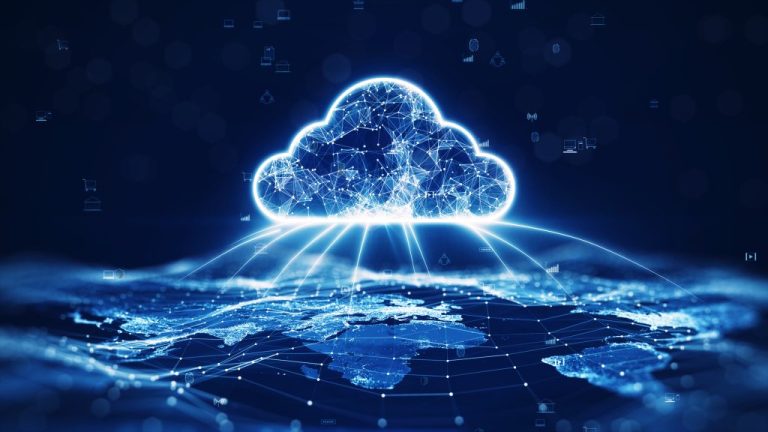Is the AI Revolution Paving the Way for a Global Energy Crisis?
Will the AI Boom Fuel a Global Energy Crisis?
AI’s growing energy demands are becoming a significant challenge. It’s not just about rising electricity costs; there are environmental implications including the depletion of water resources, the generation of electronic waste, and increased greenhouse gas emissions—all factors we strive to mitigate.
As AI technologies grow more complex and are integrated into a wider array of applications, a pressing question arises: can we sustain this technological revolution without harming the planet?
The Escalating Energy Demands of AI
The computing power necessary for advanced AI systems is on a steep incline—some reports suggest that it doubles approximately every few months. This rapid growth poses a threat to optimistic energy forecasts.
To illustrate, the future energy requirements of AI could be comparable to the total electricity consumption of entire nations like Japan or the Netherlands, or even large U.S. states such as California. Such statistics highlight the potential strain AI could place on our existing power grids.
In 2024, global electricity demand surged by 4.3%, significantly driven by AI advancements alongside the growth in electric vehicles and increased factory production. Back in 2022, data centers, AI, and cryptocurrency mining were responsible for nearly 2% of global electricity usage—around 460 terawatt-hours (TWh).
A Forecast of Energy Consumption
By 2024, data centers alone consumed approximately 415 TWh, roughly 1.5% of global electricity, with an annual growth rate of 12%. Although AI’s current contribution remains relatively modest at about 20 TWh (0.02% of global energy use), projections indicate a sharp increase is on the horizon.
Analysts predict that by the end of 2025, AI-focused data centers could require an additional 10 gigawatts (GW) of power, surpassing the entire power capacity of states like Utah. By 2027, it’s anticipated that power needs from AI data centers might hit 68 GW, comparable to California’s total capacity in 2022.
Long-Term Projections
By 2030, global data center electricity consumption could potentially double to approximately 945 TWh, nearing 3% of the world’s total energy output. OPEC estimates an even more dramatic increase, forecasting that energy use from data centers could triple to 1,500 TWh within that timeframe.
Goldman Sachs predicts that energy demand from data centers could rise by 165% compared to 2023, particularly for those optimized for AI usage, where demand may quadruple. There are even warnings that by 2030, data centers could account for as much as 21% of all global energy consumption when considering the effort involved in delivering AI services to end-users.
Energy Use Breakdown
AI’s energy consumption can mainly be divided into two categories: training AI models and operating them. Training large models, such as GPT-4, demands an immense amount of electricity. For instance, it took approximately 1,287 megawatt-hours (MWh) to train GPT-3, while GPT-4 is believed to have required around 50 times that amount.
Despite the high energy demands during training, day-to-day operations of these AI models may constitute over 80% of total energy consumption. For context, a single query to ChatGPT is estimated to consume about ten times more energy than a standard Google search (approximately 2.9 watt-hours versus 0.3 watt-hours).
Can We Meet AI’s Energy Needs?
This leads us to a critical question: can our energy systems adapt to accommodate this burgeoning demand? We are currently balancing a mixture of fossil fuels, nuclear power, and renewable energy sources.
To sustainably satisfy AI’s ever-increasing energy needs, there is an urgent need to enhance and diversify energy generation methods. Renewable sources like solar, wind, hydro, and geothermal energy play a critical role in this equation. For instance, in the U.S., it’s projected that renewable energy will rise from 23% of power generation in 2024 to 27% by 2026. Major tech companies are stepping up their commitments; for example, Microsoft plans to procure 10.5 GW of renewable energy between 2026 and 2030, specifically for its data centers. Notably, AI technology itself could assist in improving renewable energy efficiency, potentially reducing energy consumption by up to 60% in certain areas through smarter energy storage and enhanced power grid management.
However, challenges remain. Renewable energy sources are not always reliable; for instance, the sun doesn’t shine consistently, nor does the wind blow steadily. This inconsistency poses challenges for data centers requiring continuous power every day. Current battery solutions that mitigate these fluctuations tend to be costly and occupy significant space. Furthermore, integrating large-scale renewable projects into current power grids can be a complicated and slow process.
This is where nuclear power begins to garner interest, especially as a stable, low-carbon energy source for AI’s considerable demands. Nuclear energy provides the constant power that data centers require. Additionally, Small Modular Reactors (SMRs) are generating excitement due to their flexibility and enhanced safety features. Tech giants like Microsoft, Amazon, and Google are exploring nuclear energy options. Matt Garman, head of AWS, recently remarked to the BBC that nuclear power is a “great solution” for data centers, labeling it “an excellent source of zero carbon, 24/7 power.” He emphasized the importance of long-term energy planning in AWS’s strategy.
Despite its promise, nuclear power is not without its hurdles. Constructing new reactors can be a time-consuming and expensive endeavor, plagued by regulatory complexities. Additionally, public sentiment about nuclear energy remains cautious due to historical accidents, even though modern technologies are significantly safer. Furthermore, the rapid pace of AI development presents a conflicting timeline; establishing new nuclear facilities may not align with the urgent energy requirements of emerging AI technologies. This could lead to a temporary increased reliance on fossil fuels, contradicting green energy goals. There are also concerns regarding the placement of data centers next to nuclear plants, particularly about potential impacts on electricity prices and reliability.
The ramifications of AI extend well beyond energy consumption. The operation of data centers generates substantial heat, necessitating extensive cooling measures that consume large amounts of water. On average, a data center requires approximately 1.7 liters of water for every kilowatt-hour of energy consumed. In 2022, Google’s data centers reportedly used around 5 billion gallons of fresh water, marking a 20% increase from the previous year. Some estimates suggest that cooling could require up to two liters of water for every kilowatt-hour used, which means global AI infrastructure may soon demand six times more water than the entire country of Denmark.
Moreover, the surge in electronic waste (e-waste) is a growing concern. As AI technology evolves, especially specialized hardware like GPUs and TPUs, outdated equipment is discarded more frequently. Predictions estimate that data centers could contribute to an e-waste accumulation of five million tons annually by 2030. Additionally, the production of AI chips and associated components requires significant amounts of natural resources, often through environmentally harmful mining practices for essential minerals like lithium and cobalt.
Producing a single AI chip can consume over 1,400 liters of water and about 3,000 kWh of electricity. This increasing demand for new hardware also leads to the construction of more semiconductor manufacturing facilities, which may result in additional gas-powered energy plants. Carbon emissions represent yet another concern; AI powered by electricity from fossil fuels exacerbates climate change issues. Research indicates that training a large AI model can release as much CO2 as hundreds of U.S. homes generate in a year. Reports from leading tech firms show an alarming rise in AI’s carbon footprint, with Microsoft’s emissions soaring approximately 40% from 2020 to 2023 due primarily to new AI data centers. Similarly, Google has seen its greenhouse gas emissions increase nearly 50% in the past five years, largely attributed to the energy demands of its AI infrastructure.
Despite these challenges, there is room for innovation. A significant focus is on enhancing the energy efficiency of AI algorithms. Researchers are exploring various techniques, such as “model pruning” (eliminating unnecessary components from AI models), “quantization” (utilizing less precise numerals to conserve energy), and “knowledge distillation” (training smaller, more efficient models using larger, complex ones). There is also a push towards designing more compact, specialized AI models that accomplish particular tasks using less energy.
Within data centers, strategies like “power capping” (limiting power usage by hardware) and “dynamic resource allocation” (adjusting computing power based on real-time demands and availability of renewable energy) can significantly improve energy efficiency. AI can also optimize cooling systems in data centers. On-device AI offers an alternative by processing data directly on personal devices, reducing reliance on energy-intensive cloud operations.
Regulations and policies are also evolving. Governments are increasingly recognizing the importance of making AI accountable for its energy consumption and environmental effects. Establishing standardized methods for measuring and reporting AI’s environmental impact is essential. Policies encouraging companies to produce longer-lasting and more recyclable hardware are necessary to tackle the e-waste crisis. Implementation of energy credit trading systems could incentivize greener AI technologies.
Recently, a deal was struck between the United Arab Emirates and the United States to establish the largest AI campus outside the U.S. in the Gulf region. This underlines the global significance of AI while highlighting the critical need to prioritize energy and environmental considerations in such massive initiatives.
While AI has the potential to drive remarkable advancements, its substantial energy demands present a formidable challenge. Anticipated future power requirements could rival those of entire nations. To address this growing demand, a balanced portfolio of energy sources is essential. While renewables are vital for the future, their inconsistencies pose challenges for immediate scaling. Nuclear energy, especially through innovative SMRs, represents a dependable, low-carbon solution that attracts interest from major tech players. However, we must continue to tackle concerns around safety, costs, and construction timelines.
Artificial Intelligence (AI) significantly affects the environment, from the electricity needed for operation to the water used for cooling data centers, as well as the growing electronic waste associated with its hardware and the resources consumed during manufacturing. To genuinely reduce AI’s ecological impact, it’s essential to consider the entire scenario.
The positive aspect is that innovative solutions and ideas are emerging. Energy-efficient AI algorithms, intelligent power management systems in data centers, AI-aware software to optimize workloads, and the trend towards on-device AI all provide opportunities to decrease energy consumption. Furthermore, the fact that there is an active dialogue about AI’s environmental implications indicates a shift towards developing policies and regulations that promote sustainability.
Addressing the energy and environmental challenges posed by AI requires a collaborative effort from researchers, the technology sector, and policymakers to act swiftly. Prioritizing energy efficiency in AI development, investing in sustainable energy, responsibly managing hardware throughout its lifecycle, and implementing supportive policies can lead to a future where AI’s vast potential is harnessed without harming the planet. The race for AI leadership must also include a commitment to sustainability.
Want to deepen your knowledge of AI and big data from industry experts? Consider attending the AI & Big Data Expo in locations such as Amsterdam, California, and London. This comprehensive event is co-located with several other notable conferences, including the Intelligent Automation Conference, BlockX, Digital Transformation Week, and Cyber Security & Cloud Expo.
Explore more upcoming enterprise technology events and webinars powered by TechForge.
The Role of AI in Transforming Leadership
As we progress into a technology-centric era, the integration of Artificial Intelligence (AI) is paving the way for a paradigm shift from mere enablement to strategic leadership. This transition signifies a new epoch where AI not only assists in operational tasks but also plays a crucial role in decision-making processes, helping leaders harness data for more informed choices.
Addressing AI Hallucinations
Innovative solutions are emerging to counteract the phenomenon of AI “hallucinations,” where systems may provide inaccurate or misleading information. A notable initiative from an MIT spinout involves training AI to recognize its own limitations. By enabling AI to admit when it lacks knowledge, this approach not only enhances reliability but also fosters trust between users and technology.
Trending Topics
- Machine Learning Enhancements in Cloud-native Container Security
- Innovative Machine Learning Applications Reshaping Business
- AI and Fraudulent Music Streaming Boosts
- Advantages of Collaborating with Outsourced Development Teams
Latest News
Stay updated with the latest advancements in AI, machine learning, and technology innovations that are redefining industry norms.
Tackling Hallucinations: MIT Spinout Teaches AI to Admit When It’s Clueless
In an innovative leap, a spinout from MIT is addressing the issue of AI ‘hallucinations’. This development aims to enhance the transparency of AI systems by teaching them to acknowledge limitations in their knowledge.
Diabetes Management: IBM and Roche Use AI to Forecast Blood Sugar Levels
IBM and Roche are collaborating to harness AI technology for better diabetes management. This partnership focuses on predicting blood sugar levels, making significant strides toward personalized healthcare solutions.
DeepSeek’s Latest AI Model: A Setback for Free Speech?
DeepSeek’s recent AI model has sparked controversy, with critics arguing that it represents a significant regression in the realm of free speech. The implications of this model on discourse and expression are being widely debated.
Service Categories
Explore a variety of service sectors including:
- Manufacturing
- Media & Entertainment
- Not-for-Profit
- Real Estate & Construction
- Retail
- Software & Cloud Services
- Technology
- Telecommunications
- Transportation, Shipping & Logistics
- Travel & Hospitality
- Wholesale
- Other
Country Selection
Please select your country from the list below:
Permissions
By entering your email, you acknowledge that you accept our Terms and Privacy Notice.





